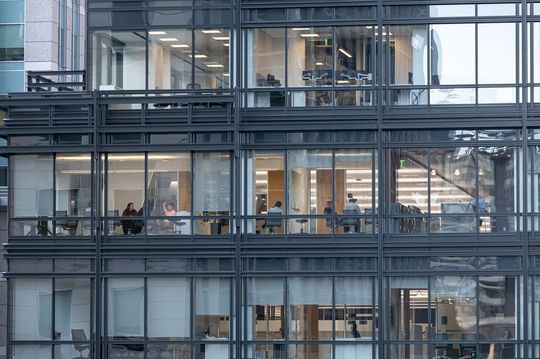
Workers called it quits less frequently in 2023, a sign confidence in the labor market is falling as the U.S. economy is expected to slow and Americans are taking longer to find new jobs.
That is a turnaround from the years just after the pandemic took hold, when resignations surged and companies faced labor shortages. In 2021 and 2022, employers put up billboards seeking workers, eliminated background checks, offered big raises and handed out signing bonuses to restaurant and factory workers.
Last year, workers quit 5.6 million fewer jobs from January through November than the same period in 2022—a decline of 12%, according to the Labor Department. December and 2023 data on quits, hiring and job openings will be released at 10 a.m. Eastern time on Tuesday.
The rate at which employees are quitting fell to prepandemic levels in recent months while companies’ pace of hiring has normalized. That cooling stands in contrast to a historically low 3.7% unemployment rate at the end of last year.
“On the surface things look really good and robust but when you dig deeper it’s a labor market that is being driven by a narrower set of industries and is showing signs of substantial slowing,” said Brett Ryan, senior U.S. economist at Deutsche Bank. Just three industries, leisure and hospitality, government and healthcare, accounted for the bulk of job creation in 2023.
It’s unsatisfying work
Fewer resignations could mean workers are less confident in their ability to find a new job or more content in their current roles. A recent LinkedIn survey found that most of workers are thinking about changing jobs this year—but many aren’t finding opportunities.
Edward Barnett works as a store service manager. He said it is a step down from a managerial role at a kitchen operations company where he was laid off last May.
“I took a job at a large retailer because I needed an income,” said the 33-year old in the Phoenix area. While his current hourly paying job brings around $70,000 a year in income—$5,000 a year more than at his previous job—he said he feels it is unsatisfying work.
He said he has sent out hundreds of applications through online job sites but hasn’t found a better job so far. “The pay is a step up but the work is a step down,” he said. “It’s not where my passions are.”
The declining quits rate will limit how fast wages grow, as companies are less pressured to attract and keep workers, Ryan said. That could be good for the Federal Reserve, which has been working to tame inflation, but not appreciated by workers seeking raises.
Last year, the U.S. economy grew at a surprisingly strong rate, shrugging off recession predictions. Economists expect growth to cool significantly in 2024, and for payroll gains of 64,000 a month this year, less than a third of the 225,000 average in 2023 and far below 399,000 in 2022.
Wait-and-see mode
The rate at which employers hired new workers has fallen below prepandemic levels in recent months. That could mean that companies are in a wait-and-see mode, wanting to keep their current employees but not hiring new ones, economists said.
The number of unfilled U.S. jobs, while still above prepandemic levels, has fallen significantly from a peak in early 2022. Fewer openings mean many workers struggle to find an opportunity good enough to quit their current roles.
Layoffs haven’t increased substantially across the country, despite some high-profile cuts. Technology companies Microsoft and eBay, media companies such as the Los Angeles Times and jeans maker Levi Strauss have recently said they are reducing staff. Economists note that there is always churn in the economy and that the announced cuts are small relative to 157 million jobs on U.S. payrolls.


